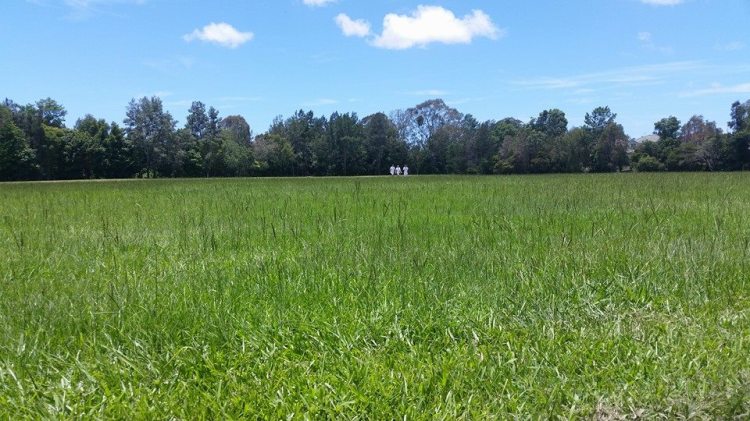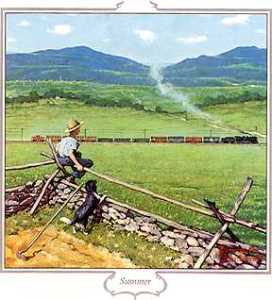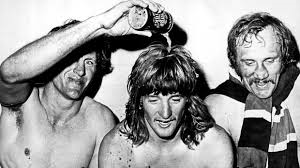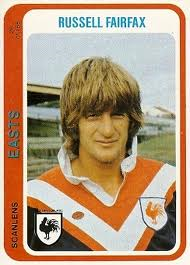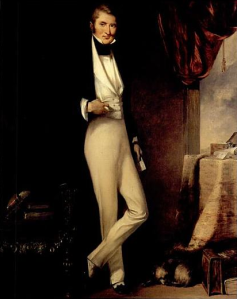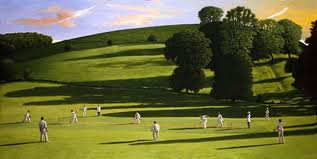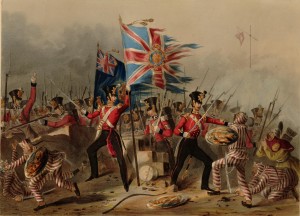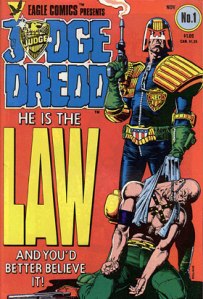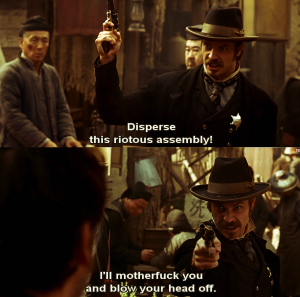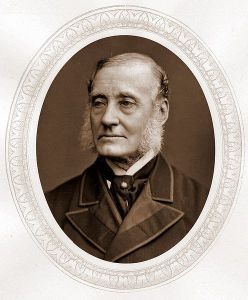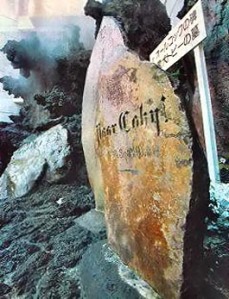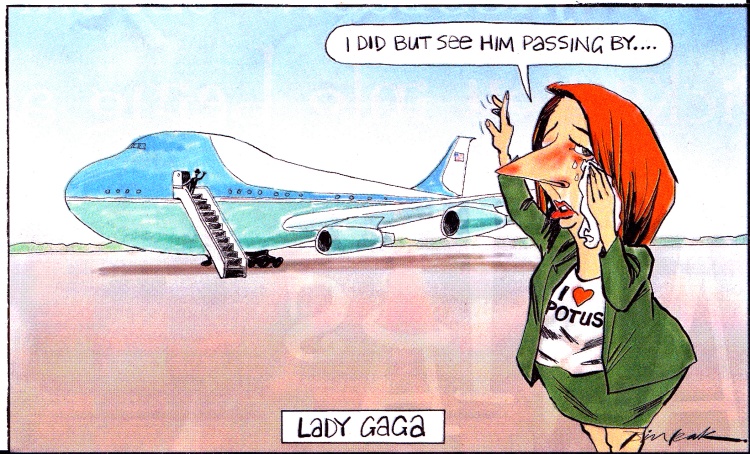What a piece of work is man! (Shakespeare: Hamlet Act II, Scene2.)
Is a cricket field!
Best laugh I (and the visiting Helensvale team) could have had on a Saturday morning last year. There are a few cricket grounds around the globe (!) I wouldn’t mind seeing; Lord’s in London, Cape Town South Africa, even the new Korean cricket oval in Incheon. But I wouldn’t have missed D’arcy Doyle Oval on the Gold Coast for any in Australia.
“WHO MOWED THIS?” gave rise to further jokes. Me: “Gold Coast Council groundsman…obviously on LSD.” A parent: “There are crop-circle enthusiasts at Mudgeereba?”
The photo perhaps doesn’t quite convey the sheer strangeness of the area around the wicket. A radius of about 15 metres from the pitch…good. Outside that radius overgrown grass at about 2 to 2 and a half feet. The odd result was that there was no reason to have fielders on the boundary. The ball could never be hit for 4 along the ground through the overgrowth. The fielder’s skill was not so much in stopping the ball (no cricket match other than a 5th day Test Match late-afternoon session with spinners operating at both ends to win it have all fielders been within 15 metres of the bat save this Gold Coast open fixture?!) but spotting the ball…finding a red solid shape slightly bigger than a tennis ball in deep grass where it has plopped after a hit!
Comedy was all on the field. In the covers, at these 15 metres, I watched the oldest player on the Gold Coast, T.R. get caught at Point by one of the youngest, J.D. “Good innings, well played, T.R.” I said as he walked off. “Now where the heck is young J.D?” I thought. As well as being one of the youngest he is one of the shortest (not all Australian 16 year olds are tall) of HPPCC cricketers. Last seen submerging to take the catch before he rose above the tall grass!
“Wh..Wh..Where are we? North Vietnam?” (Woody Allen in one of his movies finding himself in upstate New York/not Manhattan and having to walk back through an overgrown field towards a road). Memories of kunai grass for Woody, not just from the recent Vietnam War of his movie but World War 2 in newsreels of American and Australian troops in New Guinea.
“Darcy D…Darcy Dugan…D’arcy Doyle?” (thinking aloud and reminiscing to myself – Darcy Dugan was a famous Sydney criminal from the 1930s to the 1980s who spent long periods in prison). I supposed that Darcy Doyle after whom this work of cricket horticultural ‘art’ was named was a Mudgeereba/Nerang local councillor or businessman.
No. D’arcy Doyle. An artist. Of the Gold Coast. Though originally from Ipswich, near Brisbane. Royal Australian Navy sailor (with service in the Korean War), signwriter, amateur artist, then professional painter.
Australia’s Norman Rockwell in the sense that he painted popular, quintessentially Australian scenes. Naturally not in favour with modern art decision makers/arbiters of taste so therefore one of the most popular Australian artists in terms of sales!
And he painted cricket scenes from his home at Mudgeereba (hence D’arcy Doyle Oval) and even a portrait of The Don. 
Alas, a very modern art postscript for D’arcy who died in 2001.
http://www.westernadvocate.com.au/story/928402/dozens-of-doyles-aint-doyles/?cs=4189
DOYLES AIN’T DOYLES (A clever double entendre on a well-known Australian tv commercial “Oils ain’t Oils” re: car oil changes and oil painting.
Allow me to put forward my own wordplay, or nominative determinism. The wonderful English surname “Sloggett”. If Professor Robyn wasn’t Australia’s foremost art fraud expert she would be an aptly named Australian woman cricketer!
The Widow Doyle…too trusting and badly advised. Loyalty to your art dealer is all very well but the guy defrauded, if not the Doyles, then other Australian artists, so saying everything he sold was authentic? Likewise, that the more Doyles on the market, the better? Less would increase their sale price, surely!
“…others feature young children with Asiatic features. All were deemed genuine by Mrs Doyle on the day.”
I suppose all effort by the Australian Governments, States and Territories, could be directed to finding this Taiwanese art forger. Of Doyles. But really, a painting with Chinese kids running around Mudgeereba, described as a fake? The Federal Police in Canberra should be pouring more resources into art fraud but this Taipei bloke wasn’t even trying. Even if he did sign it in the style of D.D. (thereby proving forgery) would any art buyer believe the scene unless there was proof of the local Chinese restaurateur’s children in Mudgeereba playing on the street in the 1950s/60s/70s? Don’t think so. As if I forged a Fuzhou street scene painting with European-looking children running around an apartment block. They could be the children of the Swiss surgeon, English teacher, expat residents, but a Chinese art expert would genuinely have doubt!
NOTES:
BBC TV on Painting authentication. http://www.bbc.co.uk/programmes/b01mxxz6
D’arcy Doyle. https://en.wikipedia.org/wiki/D%27Arcy_Doyle
Mudgeereba. http://www.visitgoldcoast.com/places-to-see/mudgeeraba
